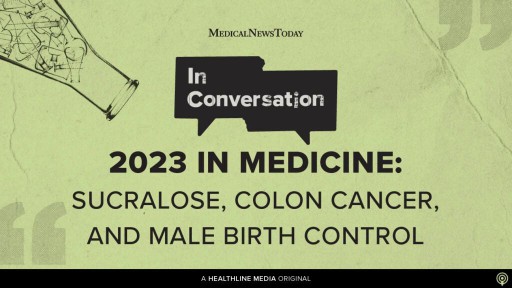- Stroke mortality is expected to increase by as much as 50% by 2050.
- This is for a variety of reasons, like an aging population and a general lack of stroke education.
- Experts recommend everyone, including younger people, properly educate themselves on the symptoms of a stroke, so they can immediately seek medication attention if needed.
The worldwide stroke mortality rate is expected to rise by 50% by 2050.
According to a new report published in the Lancet Neurology, the number of people who die of stroke globally is expected to dramatically increase within the next few decades.
Valery Feigin, one of the report’s authors, explained there are numerous ground-breaking findings, including:
- The burden of stroke has grown faster than expected, especially in people younger than 55 years old and in low- to middle-income countries (LMICs).
- The gap in stroke burden between LMICs and high-income countries (HICs) continues and gets wider.
- The only solution for reducing stroke incidence is effective primary stroke prevention. The current strategy, focusing on people with a 15% or greater 5-year risk of having a cardiovascular event such as a stroke, is not sufficient and must be enhanced by other strategies.
- A healthy lifestyle and wider use of validated and affordable digital technologies must be at the forefront of stroke prevention care.
- Urgent actions must be taken to improve acute care and rehabilitation, especially in LMICs
- Governments should allocate a fixed proportion of annual health funding for the prevention of stroke, which could come from taxation on tobacco, salt, sugar, and alcohol to provide further motivation for a healthy lifestyle.
Here’s why stroke-related deaths are on the rise, how stroke mortality impacts Americans, and lifestyle habits that contribute to a lower stroke risk.

Getty Images / Dean Mitchell
Why Stroke-Related Deaths Are on the Rise
The increase in stroke-related death and disability can be attributed to several reasons.
Things like lack of awareness of stroke symptoms, the importance of rapid treatment, unhealthy and sedentary lifestyles, and lack of access to quality care all contribute to how likely someone is to have a stroke, Hardik Amin, MD, a Yale Medicine stroke specialist, told Health.
Additionally, the rates of death and disability are increasing at a faster pace in low and middle-income countries, he said. And, the number of new stroke cases in younger people is increasing worldwide.
That said, people are also living longer, and the population is aging as a whole. Amin clarified that stroke is still more common in older patients who have higher rates of irregular heart rhythms and cardiovascular risk factors.
The combination of an aging population and the commonality of stroke at an older age is likely a large reason for the uptick in stroke events.
“Given that the incidence of stroke rises with age, the combination of growing populations and the aging demographic across the globe is partly responsible for this increase in stroke burden,” G. Abbas Kharal, MD, MPH, a physician in the Cerebrovascular Center at Cleveland Clinic, told Health.
However, the incidence of stroke is also increasing in young and middle-aged people (people under the age of 55) globally.
This is likely due to the rise in stroke risk factors in this patient population, which appears to be due to a myriad of factors like:
- Lack of awareness of stroke risk factors
- Lack of regular surveillance for stroke risk factors
- Poor lifestyle habits
- Lack of standardized or readily available primary prevention strategies across the globe
The type of stroke someone is more likely to experience is also shifting.
The burden of large vessel occlusion ischemic strokes (LVO-IS) appears to be rising, in both younger and older adults, Kharal explained.
This kind of stroke is more disabling and requires intervention with intravenous thrombolysis and mechanical thrombectomy which are not readily available everywhere.
Although the availability of stroke interventions like those above is better in high-income countries (HICs), significant disparities exist even within HICs in the availability of primary and comprehensive stroke centers, established prehospital triage and telestroke networks, and access to acute stroke care across various regions within the same country.
Kharal explained that stroke care like this is still insufficient across the globe, and isn’t a priority for many governments. This leads to an overall increase in stroke burden and a higher stroke mortality rate.
How Stroke Mortality Impacts Americans
While the likelihood of death from stroke is lower in the United States compared to lower-income countries, the rates of strokes in younger patients are increasing worldwide.
This is alarming, as stroke at a young age can lead to long-term disability, driving up healthcare costs overall.
But certain lifestyle factors that contribute to stroke risk, like diabetes and obesity, have increased among young people in the United States, likely contributing to the country's stroke burden.
Amin stressed that increasing awareness of the rise in cardiovascular risk factors in younger Americans is critical in lowering their risk of stroke.
In addition to ensuring that young people are properly educated on stroke risk factors, the United States is facing the same aging population as the rest of the world.
The percentage of senior citizens (65 years or older) in the U.S. is expected to increase from about 17% to 22% by 2050, Amin said, which will lead to more people in that age group having strokes.
10 Stroke Symptoms Everyone Should Know
Lifestyle Factors to Prevent a Stroke
Steps need to be taken in order to avoid this steep rise in stroke mortality.
“Stroke is a highly preventable and treatable condition,” said Amin. “The best way to lower the risk of stroke is to live a healthy lifestyle with a balanced diet and exercise.”
Knowing the risk factors of stroke is useful in managing this health condition.
Increasing awareness of stroke symptoms and the importance of rapid treatment can be the difference between living with a major disability versus independently.
Finally, addressing inequalities in access to health care can help change this projection, Amin explained.
Broader access to affordable health care, improving training of health care staff in rural areas, and government-led initiatives to control risk factors are some strategies the report authors suggest.
Many patients don’t know that if they come to the hospital quickly, medical staff can provide treatments that can be lifesaving or dramatically reduce disability, Amin said, but those treatments are only effective if patients come to the hospital quickly.
Ultimately, for patients and healthcare providers, stroke education is crucial.
“The most common symptoms of stroke include sudden drooping of the face, weakness or numbness on one side of the body, changes in speech, vision loss, or severe balance or coordination problems,” said Amin. “These symptoms often come on suddenly without warning and are not typically associated with any pain.”
If you or a loved one are experiencing symptoms of a stroke, seek medical attention immediately.







